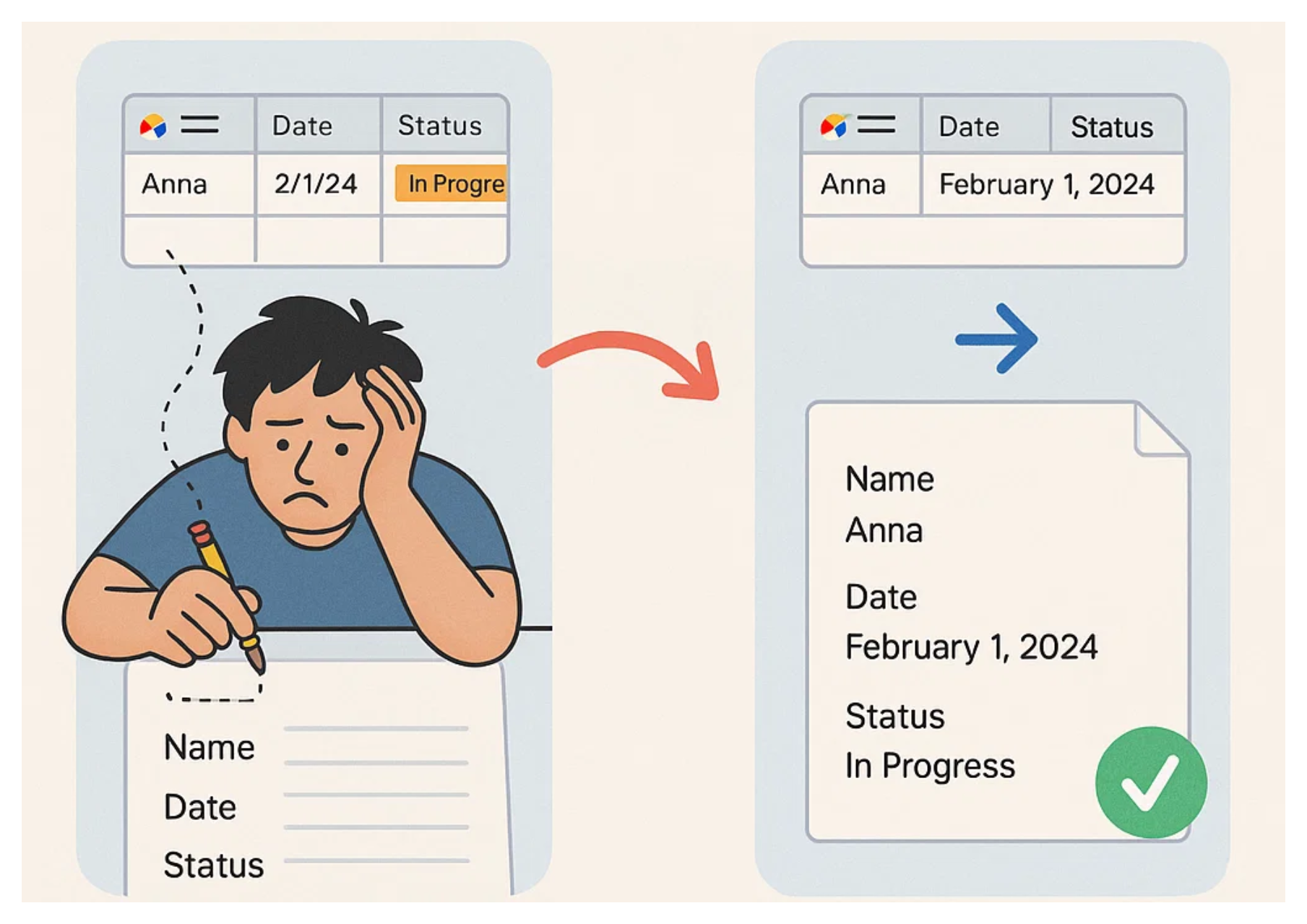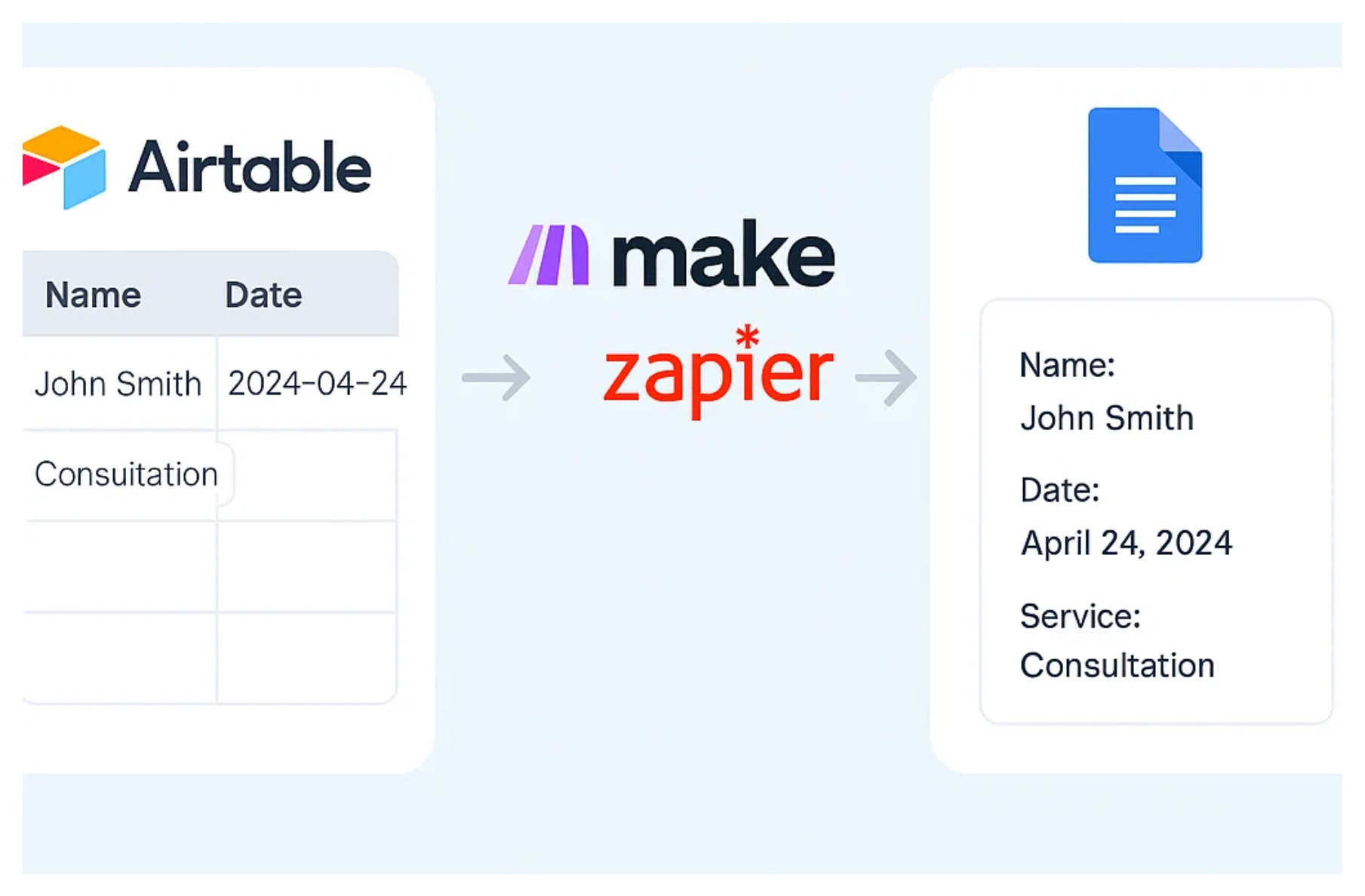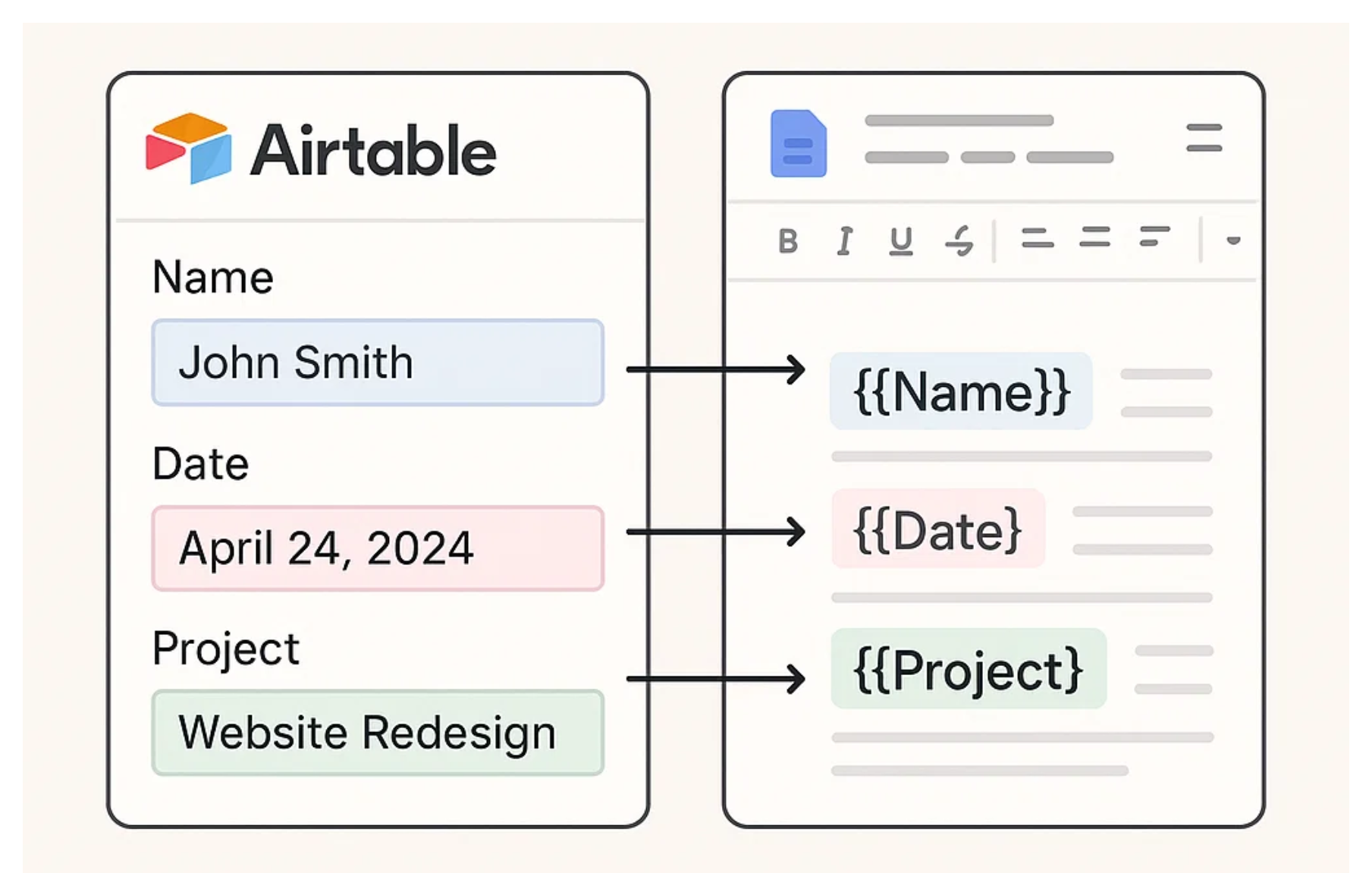How to Automatically Create Docs from Airtable Records
Let’s say you run a small agency that helps startups with branding and launch strategy. Every time you onboard a new client, you send them a welcome packet.
This includes a service agreement, a detailed timeline, and a personalized strategy document. All these files follow a standard structure, but the content changes depending on the client.
You’re already using Airtable to track your clients, their project timelines, and kickoff call notes. The data is organized and up to date.
But when it comes time to create those documents, you still find yourself copying and pasting names, dates, and goals into a Word or Google Docs template. One document at a time.
And it’s not just this one use case. Maybe you’re running a training program and need to generate certificates for 80 attendees. Or you’re part of an HR team that has to send out personalized offer letters. Or maybe you’re a real estate agent creating property sheets for each listing.
In all these cases, you’re repeating the same steps over and over, building documents from structured data manually.
If that information already exists in Airtable, there is a better way to handle this. You can set up a system that automatically creates polished, ready-to-send documents without ever opening a blank page.

Here are two different options you can use to automate document creation using Airtable.
1. Use No Code Tools

One way to generate documents from Airtable records is by using no-code workflow tools like Make or Zapier. These tools connect your Airtable base to a document editor such as Microsoft Word or Google Docs.
They let you create a simple automation that fills in a document template using data from a record. Once the file is ready, it can be delivered exactly where it needs to go.
The process typically begins with a trigger. This could be when a new record is added to your base or when a specific field is updated. Once triggered, the workflow pulls the relevant data and inserts it into a pre-designed template.
Your template might include fields like client name, invoice number, or delivery date. All of this comes straight from Airtable.
The automation replaces the placeholders in your document with actual values from your record. One row becomes one document, filled and ready to use.
The final file can be saved to your cloud drive, emailed to a recipient, or sent to another system. Everything happens in the background.
2. Use Document Generation Tools

Another way to create documents from Airtable records is by using tools built specifically for document generation. DocsAutomator is one example.
These tools take the structure of a Google Docs template and fill it automatically with data from your base. This works especially well for things like certificates, letters, reports, or invoices.
You begin by setting up a Google Docs file as your template. Inside the document, you add placeholders. These are often written in double curly brackets and mark where each piece of data will go. Names, dates, amounts, or messages are all common examples.
Once the template is ready, you connect it to your Airtable base. Most document tools let you map each placeholder to a specific Airtable field so that every record creates its own version of the document.
You also decide when the document should be created. It could be when a record is added or when a certain status is selected. Once the condition is met, the document is generated and saved to your Google Drive or shared automatically.
You can use either of the options to start generating documents automatically from Airtable.
Need help or have feedback? Email me at[email protected]